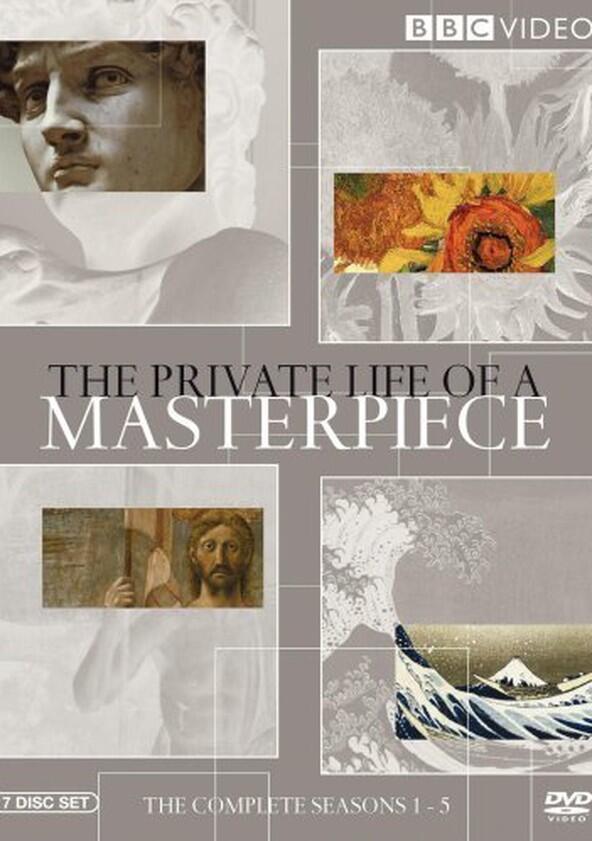The Private Life of a Masterpiece - Season 3

Season 3

Episodes

Auguste Rodin: The Kiss
Rodin's The Kiss is arguably the most sensual sculpture in the art of the past 150 years. Its subject matter is more daring that most people understand: A it portrays a girl seducing a man. The sculpture has been controversial right up to the 21st century.

Francisco Goya: The Third of May 1808
Arguably the most powerful painting about war ever achieved. It portrays the slaughter of civilians after Napoleonic troops entered Madrid in 1808. The programme reveals the historical truths behind the painting and shows exactly how Goya achieved this masterpiece of protest.

Auguste Renoir: Dance At The Moulin de lA Galette
This painting was once described as the most beautiful of all the artworks of the 19th century. Certainly it seems the happiest. But beneath renoir's joyful portrayal of working class Parisians at leisure is another, darker story.

Rembrandt: The Night Watch
Why should a painting of a group of part-time Amsterdam militiamen, dressed up for an occasion that wasn't serious anyway, have become the most revered painting in Holland? The full story of Rembrandt's masterpiece.

Sandro Botticelli: The Primavera
Botticelli's painting is extraordinarily beautiful; his portrayal of Flora, the central character, reveals a face you might find in London or Bologna or Boston today. But what the painting is about is a mystery which scholars devote their lives to solving. It is rich is sex, even rape, but it also about love and the highest aspirations of man.

Hokusai: The Great Wave
Perhaps the most celebrated of all Japanese pictures, the Great Wave's portrayal of a huge wave about to overwhelm three boats was only produced by Hokusai when he was old and broke and needed money badly. A print that cost little more than bowl of noodles to those who first bought it, the image has been hugely influential on later art.

Edgar Degas: Little Dancer, Aged 14
The statue of the young girl in a real ballet dress is often seen today just as a pretty image of dancer making one of the classic moves of ballet. But to the people who first saw the statue when it was unveiled it was a dangerous, even disgraceful, portrayal of a degenerate girl little more than a whore. The programme reveals the story of the real woman who Degas used as a model and includes revelations about how the statue as actually made.

Vincent Van Gogh: The Sunflowers
Perhaps the most reproduced of all 19th century paintings, The Sunflowers has a story that lies at the crux of the complex relationship between Van Gogh and Paul Gaugin. The programme reveals how Van Gogh started to paint sunflowers soon after he moved from Holland to Paris and how they became the emblem of his embrace of Southern France, warmth and the sun. It looks especially at the 8th of the Sunflower paintings, the one in the National Gallery in London which is arguably the best in the series. It was most admired and desired by Gaugin but denied to him by Van Gogh as their relationship deteriorated.

Pablo Picasso: Les Demoiselles D'Avignon
Arguably the first modern painting, this portrayal of five huge prostitutes was so powerful and controversial when it was first revealed that one fellow artist declared that Picasso would be found hanged behind it one day. The programme sets out the origins of the painting in the intense rivalry for the leadership of the Parisian avante-garde between Matisse and Picasso and shows in great detail how Picasso worked and re-worked, changed and changed again his concept for the painting in an endless series of studies.

James Whistler: Portrait Of The Artist's Mother
The stark portrait, mainly in greys and black, that James McNeill Whistler painted of his mother is now a picture that is widely lampooned as a portrait of a prim Victorian lady. She is shown smoking reefers, wearing trainers, having a tatoo. But Whistler's approach was revolutionary in its time, wholly departing from the Victorian tradition of sentimental narrative painting. His relationship with his mother was also an intriguing study in contrasts.
Recently Updated Shows

Beyond the Gates
Beyond the Gates is set in a leafy Maryland suburb just outside of Washington D.C., and in one the most affluent African American counties in the United States. Here you'll find a posh gated community with winding tree-lined streets and luxurious mansions to call home. At the center of this community are the Duprees, a powerful and prestigious multi-generational family that is the very definition of Black royalty. But behind these pristine walls and lush, manicured gardens are juicy secrets and scandals waiting to be uncovered. And those that live outside these gates are watching closely. These are the places where our characters live, love, work and play. Those who have "made it" and those who haven't are all trying to navigate life … and some with more grace than others.

WWE Premium Live Events
Beginning with the 2014 Extreme Rules Pay-Per-View on 4 May 2014 the WWE began airing all of their Wrestling Pay-Per-Views exclusively on the WWE Network. Subscribers who pay the $9.95 monthly fee will be able to view any Pay-Per-Views past, present and in the future exclusively on the WWE Network at no additional charge as long as their monthly fees are paid up-to-date.

Peacemaker
The series will explore the origins of the Peacemaker, a man who believes in peace at any cost - no matter how many people he has to kill to get it.

The Ministry of Time
The Ministry of Time, a newly established government department, is gathering ‘expats' from across history in an experiment to test the viability of time-travel. Commander Graham Gore (an officer on Sir John Franklin's doomed 1845 Arctic expedition) is one such figure rescued from certain death – alongside an army captain from the fields of the Somme, a plague victim from the 1600s, a widow from revolutionary France, and a soldier from the seventeenth century.
The expats are placed with 21st century liaisons, known as 'bridges', in unlikely flatshares. Gore has to learn about contemporary life from scratch: from air travel to industrial warfare, from feminism to Spotify, from cinema to indoor plumbing; and he must negotiate cohabiting with the ambitious modern woman who works as his bridge. After an awkward beginning, the pair start to find pleasure and comfort in each other's company, developing a relationship that is simultaneously tender, intense and profoundly unprofessional; and the expats, adrift in a new era, form friendships that ground and support them in the lonely 21st century, where they have outlived everyone they ever knew and loved.
When a deeper conspiracy at the Ministry begins to reveal itself, the bridge must reckon with what she does next. Will she save or sacrifice the exiled misfits she has come to care for so deeply?